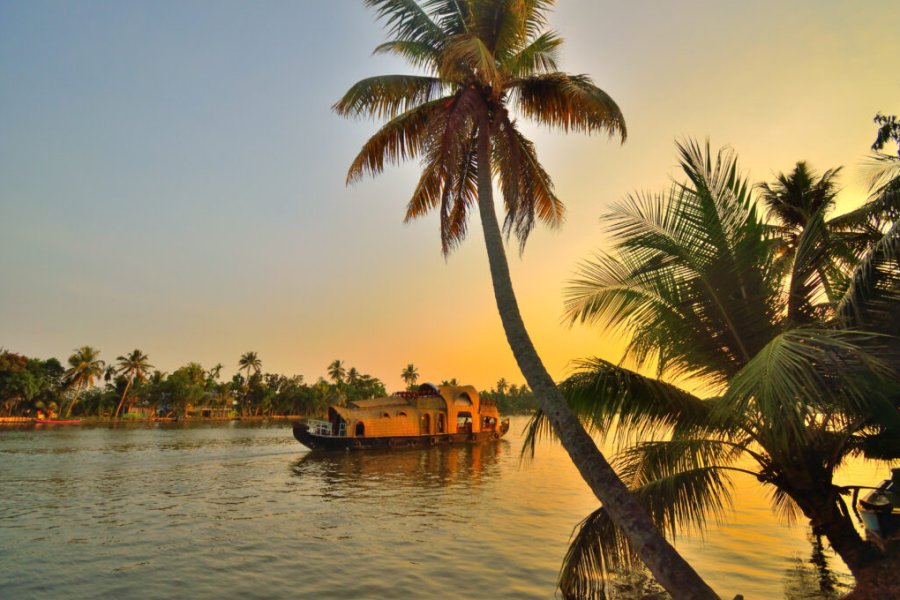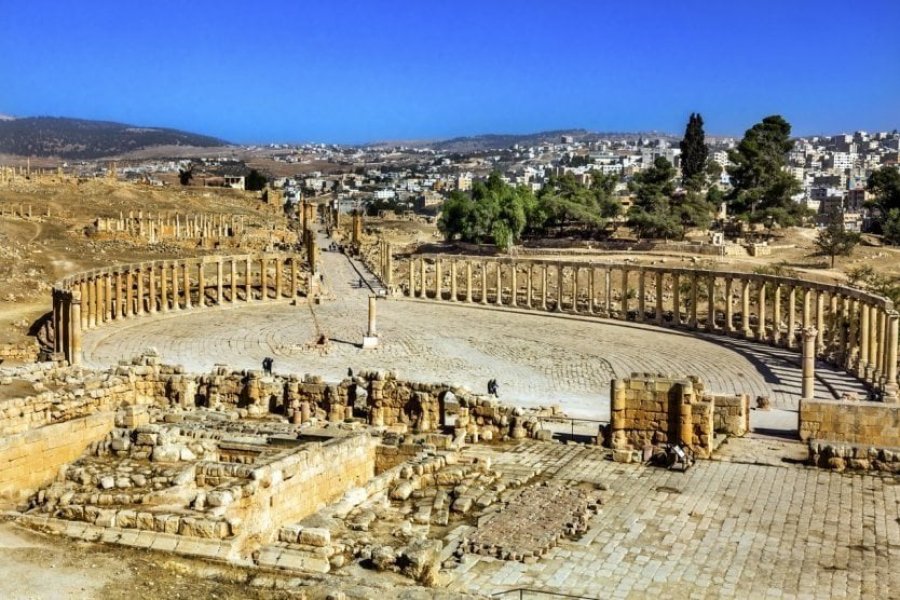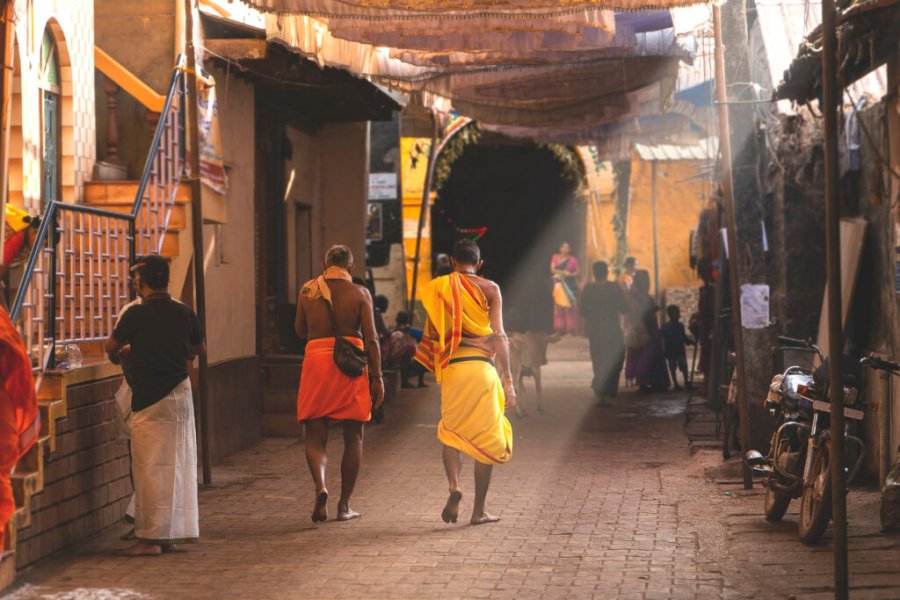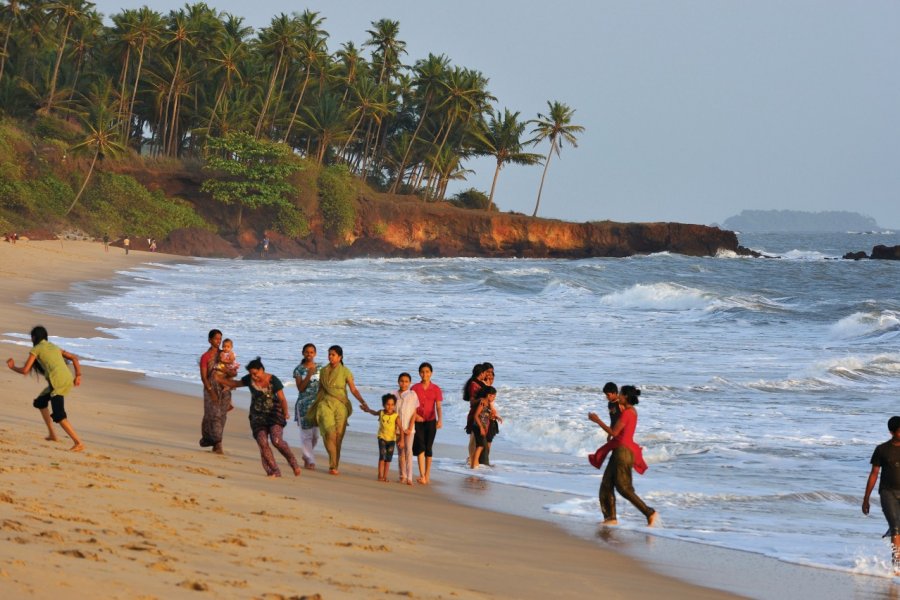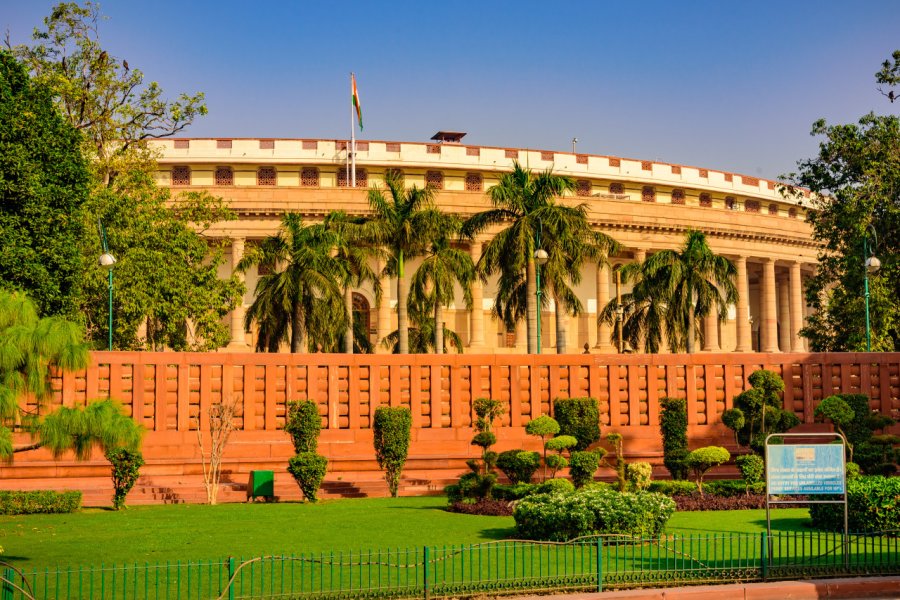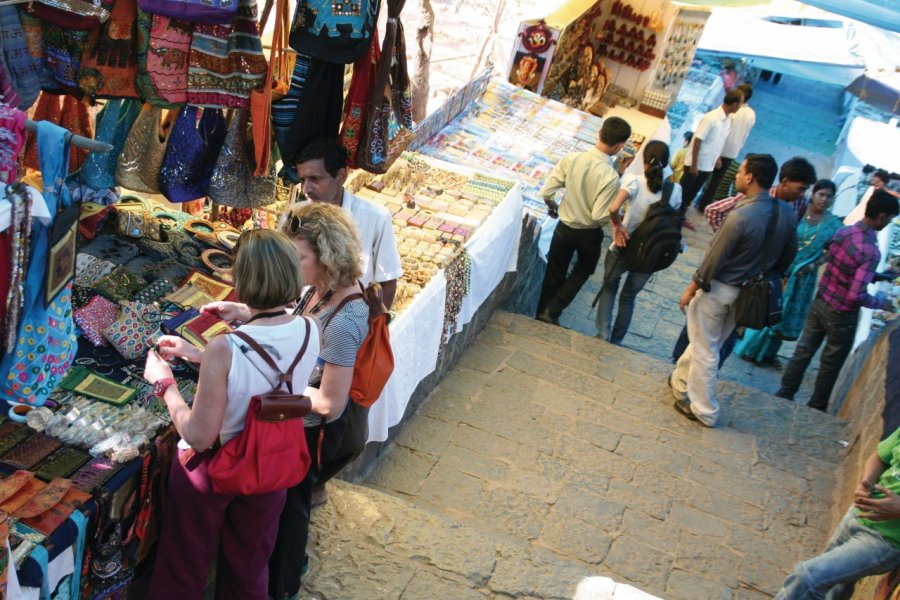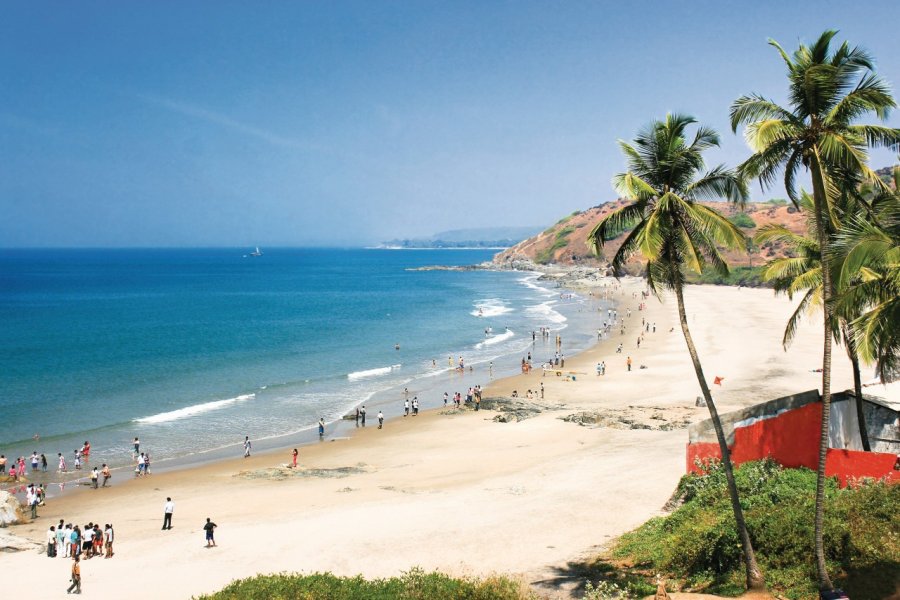Travel guide South India
A trip to South India is a concentrate of magnificent landscapes, multiple cultures, religious fervor, and the bewitching scent of spices. The forts of Maharashtra, the mosques ofHyderabad, the tombs of Bijapur added to the numerous Hindu historical sites testify to the great cultural richness of this part of India. But the strength of South India is above all its enchanting landscapes, declined on all the range of greens: rice fields, coconut trees, tea plantations as well as natural parks of any beauty like those of Periyar or Wayanad. And it is also of course the dream beaches of Goa. Finally, India would not be what it is without this whirlwind of life, which can be observed in Pondichery, and which catches up with you at each crossroads of your trip. Whether it is via a tour organized by a tour operator or by leaving alone with a tourist guide of South India, it is difficult not to be seduced by the beauty and the complexity of this marvelous country.
What to see, what to do South India?
-
Book an activity
-
Customized travel
- The most beautiful cities South India
When to go South India ?
The high season in South India is from November to March, with a peak from mid-December to late January. This is when the weather is most pleasant, but you will need to book your hotels in advance and the nightly rate will be a bit more expensive. Some resorts in Goa can be overcrowded due to the influx of tourists from all over the world. The off-season months (April, September and October) are the best time to go to South India where the climate is still mild and hotel rates are good. The low tourist season is from May to August with a clear drop in May and June. You will be able to benefit from interesting rates everywhere during this period but it is also the season when it is really hot and when a number of hotels close, especially in Goa.
Suggested addresses South India
Travel South India
-
Find a hotel
-
Car Rental
-
International e-SIM package
-
Find a local agency
Le sud de l’Inde propose des sites naturels, culturels et historiques riches et variés. Des imposants temples hindous colorés du Tamil Nadu aux vestiges de l'Empire Vijayanagar à Hampi, des plages magnifiques de Goa à la quiétude des backwaters du Kerala, de l'atmosphère paisible de Mysore au tumulte urbain de Mumbai, de la magie sereine et verdoyante des Ghâts occidentaux aux plaines arides du nord du Karnataka, il y en a pour tous les goûts. Nous vous proposons ici quelques idées d’itinéraires qui vous permettront de découvrir le sud du pays, ou de l’explorer plus en profondeur pour ceux qui connaissent déjà. Il convient de régler les détails des transports en avance, car même les trajets les plus courts peuvent parfois prendre un certain temps en Inde. Si vous pouvez bénéficier de 2 ou 3 jours supplémentaires pour effectuer ces circuits, vous pourrez alors en profiter pleinement.
Find unique Stay Offers with our Partners
How to go South India
How to go alone
Several airlines fly directly to Bangalore from Europe or the Middle East. Book early for the best prices! Travel is easy to organize in Bangalore, as transportation rates are low even at the last minute. South India is safe, but it is advisable to avoid hanging out on the street late at night and, for women, it is important to avoid short clothing and to cover your knees and shoulders to avoid being bothered.
How to go on a tour
The tours in South India are multiple and one can choose to do a grand tour of South India including the big cities like Pondicherry or Goa as well as a thematic stay, in Kerala for example, from the Backwaters to the tea plantations. South India being a remote and exotic country, it takes some time to acclimatize, not to mention the long trips there; we therefore recommend a minimum 15-day tour and not just 10 days.
How to get around
It is quite easy to travel by air in South India because of the frequent and regular service to the different airports via regular and low-cost airlines. India's rail network is huge and well developed, including in South India. It is a low-cost means of transportation but the trains are often full. Buses also serve South India well with fares generally equivalent to those of2nd class trains.
Featured articles South India
Discover South India
India is a country of a thousand facets and exceptional cultural richness. The south of the country shares a common history and fervent faith with the north, but also has its own distinctive features. Each state has its own cultural heritage, traditions, language, gastronomy, art forms... Religion is omnipresent in the daily lives of all Indians, whether Hindu, Muslim, Catholic, Buddhist, Jain or Parsi. The southern Indian peninsula also boasts superb landscapes that vary according to climate and topography, rich wildlife, tropical vegetation and enchanting historical monuments. This chapter presents the different facets of South India, its history, its special features, such as the magnificent backwaters of Kerala or its sophisticated gastronomy, its people... Forget the clichés about India and discover a fascinating country.
Pictures and images South India
The 12 keywords South India
1. #Ashram
A place dedicated to meditative retreat, inner search, spiritual practice and community life. It is here that the guru teaches his art and knowledge to his disciples. Most Western visitors come to ashrams to practice and learn yoga and meditation intensively.
2. #Ayurveda

It is an ancestral holistic medicine, gentle and intuitive, which integrates all aspects of human life, from the most abstract (energies, the relationship with the universe) to the most concrete (the functioning of the human body and its imbalances). Kerala has a large number of establishments that combine vacations and treatments.
3. #Bollywood
It is not a specific place but a term for a specific cinematographic style in Bombay. It is in this city that the heart of the Indian film industry is located. More films are produced here each year than in Hollywood. For many young people, it is a dream to go to Mumbai in search of fame.
4. #Chai
National drink, tea (chai) is cultivated on the heights of the Western Ghats. It is traditionally prepared with milk, sugar and spices (ginger, cardamom, cloves, pepper... depending on the place and the recipe!) The plantations in the region of Munnar, in Kerala, are among the most famous in India.
5. #Elephant

This peaceful pachyderm is often associated with Ganesh, the elephant-headed god of Hinduism. He is omnipresent in most temples to bless the faithful with their trunks. You can also see wild elephants in their natural habitat in one of the many nature reserves in the south.
6. #Spices

Turmeric, black pepper, cinnamon, cardamom, ginger... Many spices sold in the world are produced in the south of the country. From the Phoenicians to Vasco de Gama, all the great navigators came to India to make their fortune through this trade. You will find excellent quality spices at low prices in Kerala or in the markets of Mumbai.
7. #Western Ghats
Green mountain range stretching from Maharashtra to the southern tip of the Indian peninsula. Climatic resorts, national parks and natural reserves, rich and diverse fauna, luxuriant flora, tea plantations, spices, rubber trees... A trip to the south of the country would not be complete without a stay in these mountains!
8. #Mahâbhârata
The major work of the Hindu religion, a great epic and sacred poem written in Sanskrit. Predating the Râmâyaṇa, it consists of 18 books and tells the epic tale of the Bhârata, descendants of the legendary emperor Bharat and ancestors of the Indian people. The Bhagavad Gîtâ, which tells the story of Krishna, is part of the sixth book.
9. #Puja
It is an offering made to a deity in order to obtain protection, health, wealth... It marks the daily life of Hindus who go to the temple to perform a puja to their favorite deity before starting their day. The great religious festivals give place to pujas gathering thousands of faithful.
10. #Ramayana
Along with the Mahâbhârata, it is one of India's two great mythological epics. Written in Sanskrit, it is a fundamental Hindu narrative. It tells the story of Râmâ, one of Vishnu's avatars, and Hanuman, the monkey god, on his way to rescue his wife Sita from the clutches of a demon on the island of Ceylon (now Sri Lanka).
11. #Thali
Thali is an assortment of dishes, vegetarian or otherwise, served on a banana leaf. It consists of at least two dishes, one of which is in sauce, daal (lentils), rice, dahi (yoghurt) and a dessert. Recipes vary from state to state and region to region. It's the most popular lunch for many South Indians.
12. #Yoga

Ancestral philosophy of life including personal hygiene, dietetics, body exercises (postures or asanas), meditation and moral asceticism, with the aim of realizing the unification of the human being in its physical, psychic and spiritual aspects. Numerous courses will allow you to initiate yourself or to perfect your skills.
You are from here, if...
If you use your right hand to eat. In India, the left hand is used for other functions considered impure, while the right hand is used for eating, shaking hands, etc.
If you removeyour shoes before entering a religious place (temple, mosque and sometimes even church), and if you keep your dress code correct (shoulders and knees covered).
If you nod slightly as you listen to your interlocutor. It's a little disconcerting at first, but the grace of the gesture and the smile that accompanies it most of the time will soon make it familiar and understandable.
If you're discreet in your displays of affection. Kissing and hugging are considered sexual gestures, so it's best to refrain from them in public!
If you bring sweets to a dinner party, not flowers or alcohol.






